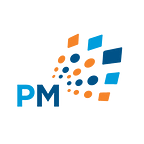How To Effectively Teach Healthcare Practices
When we speak with healthcare organizations and ask them what the most important features of policies should be, nine times out of ten they respond by telling us that they should be easy to understand and follow. This can be a tricky thing to achieve because when creating documents they are to be read, and understood, by a wide variety of staff at an organization. So while you should use policy management software that works well for your healthcare organization, in order to organize your policies, the policies themselves should be clear, concise and simple to understand. For your organizations needs, it may be that our software works well for you, or it may be that another vendors offering works better, either way I have set out some information below to help make your healthcare practices easier to understand and follow.
Safe And Effective Healthcare Practices
Healthcare practices set the framework as to how safe and effective care procedures are to be conducted. These organizations are faced with the ever-changing regulatory and accreditation requirements that make it a challenge to continuously update for the staff who are responsible for following the polices. It is the responsibility of management to make sure that all of their employees understand, and will follow, these processes. Beyond the vast number of policies, it is critical to understand that people learn in different ways; no one person has a better learning style than another. Learning modalities are the pathways through which individuals give, receive, and store information. Perception, memory, and sensation comprise the concept of modality. The modalities or senses include visual, auditory, and tactile/kinaesthetic. Researchers have concluded that in a classroom, students learning modalities would be approximately:
25–30% visual
25–30% auditory
15% tactile/kinaesthetic
25–30% mixed modalities
Therefore, only 30% of the students will remember most of what is said in a classroom lecture and another 30% will remember primarily what is seen.
Understanding Healthcare Policies
In order to improve how to communicate these processes, it is important to understand that there are basically three types of learning modalities.
Visual Learners are those who learn by seeing. They need to see overheads, diagrams, and read textbooks, etc. to understand a concept.
Auditory Learners must hear what they are learning to really understand it. They enjoy listening, but cannot wait to have a chance to talk. These people respond well to lectures and discussions.
Tactile/Kinaesthetic Learners need to feel and touch to learn. These learners also learn better if movement is involved. Instruction that is geared to the auditory learner can be a hindrance to these people, causing them to fall behind and not comprehend. It is noted that about one-third of humans do not process auditory information and are educationally deaf. People with a tactile strength learn by using techniques involving games, the Internet, and labs.
An effective means to reach all learners is modality-based information; this consists of organizing around the different modalities to accommodate the needs of all learners. Most people learn with all their modalities, but some may have unusual strengths and weaknesses in particular modalities. For example, those strong in the visual modality will be frustrated or confused with just verbal explanations.
The Healthcare Workforce
The same issues carry over into the healthcare workforce. If an organization is only allowing their employees to read the policies, they are theoretically only reaching about 30% of their audience effectively. This is where more sophisticated policy management systems can come into play. Allowing an individual to not only read a policy but, perhaps, listen and watch a video, or look at an image that will help explain the intent, can allow the organization to more effectively reach the various learning options, and ultimately assure a more effective and broad means to communicate.
When evaluating how your organization will help all understand and learn their policies, it is imperative that consideration be given to having tools that can provide all the means of these learning modalities. Very few systems out there on the market today provide this. When evaluating your policy management systems, thought should go into whether the systems can help accommodate these different learning modalities.
It is no easy task to create universally-easy-to-understand policies and procedures. The one thing that can, perhaps, make things less stressful is by having policy management software that can reduce the time and effort required in controlling the administration of documents. Just as there are different ways of teaching, there are different ways of managing policies and procedures. You may find our software does a good job of this, you may find another vendors software works better, or you may find a different system is a better fit. In order to find out which works best we would be happy to talk you through the options available; so please do not hesitate to contact us. Or if you would just like to see our software in action to get a feel for it please request a free, no obligation, demonstration.
